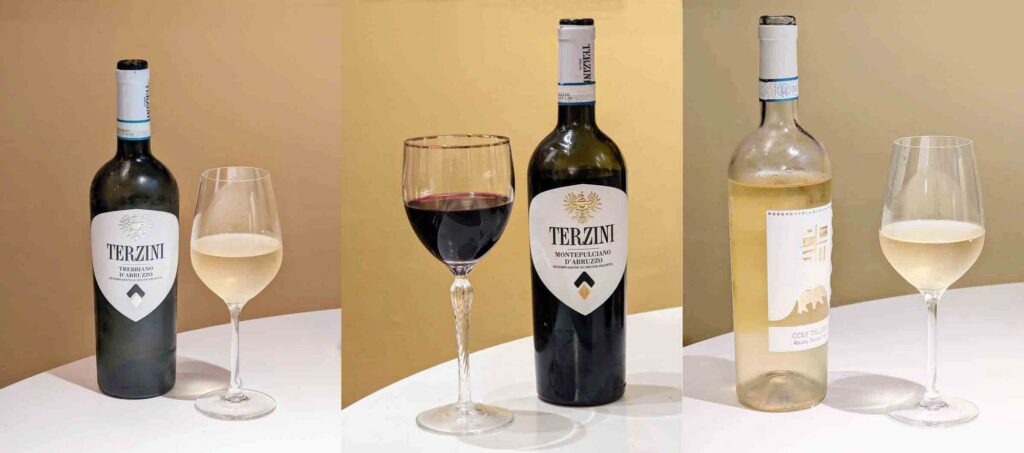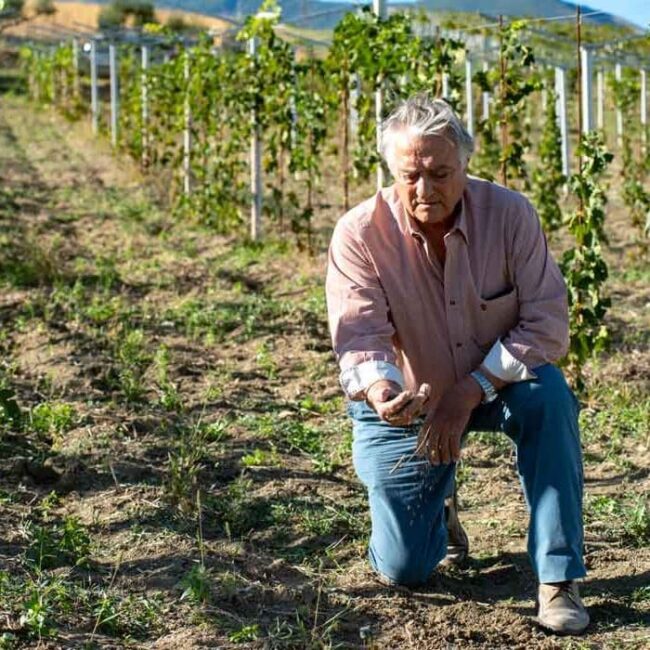
Italy is famed primarily for its red wines, including Montepulciano in Abruzzo. But the region also produces some excellent whites. The best of them are Trebbiano d’Abruzzo, made from the regional clone of the white wine grape that accounts for nearly a third of the white wine vineyards in all of Italy. For example, Soave and Orvieto are based on the same grape.

But Trebbiano displays a special character in Abruzzo that justifies going under its own name. We recently acquired a bottle of Trebbiano d’Abruzzo from Cantina Terzini (cantinaterzini.it). The Terzini family has grown grapes for generations but started making wine under its own name in 2007. Cantina Terzini has been a big success in Europe and Australia but is still seeking an American importer. That’s Aldo Terzini, the pater familias, kneeling in the vineyards at right
This Trebbiano d’Abruzzo is crisp and golden with a delicious balance of fresh grapes and flowers. As it warmed in the glass, it became increasingly complex, showing layers of subtle flavors enhanced by the grape’s natural acidity. The wine pairs nicely with poultry, fish, and moderately aged cheese. While most Italian whites are good accompaniments to food, we found ourselves reserving a little of Terzini’s Trebbiano to sip after dinner.
It makes good sense for wineries to grow both Trebbiano and Montepulciano because the two grapes ripen at different times. The Terzini Trebbiano was 13.5% alcohol, an indication that the grapes were fully ripe when they were hand harvested in the first half of September. The family’s Montepulciano d’Abruzzo — an elegant and velvety example of the wine — came in at 14.5%. Both grapes were grown in the same pergola method to keep the clusters high and well ventilated. The adjacent vineyards share the same clay soil and are both at 350 meters elevation. The Montepulciano was hand harvested four weeks later — after the Trebbiano had already finished its initial fermentation.
Terzini also makes another white wine from the Pecorino grape, which is indigenous to northern Abruzzo and southern Marche. We were not able to get any from Terzini but did try a bottle of Colle dell’Orso, an Abruzzo Pecorino DOC from Podere Colle San Massimo. (It’s another producer looking for an American importer.) The golden intensity of this wine (‶Bear Hill″ in Italian) signaled its intensely fruity concentration and almost bracing acidity. It has a lightly bitter aftertaste, which would make it a good wine with pheasant or rabbit. It is an organic wine with no added sulfites. If you find some, be sure to drink it all the same day — hardly a hardship. We left a glass to try the next day and found it had oxidized. New motto: carpe vino.
